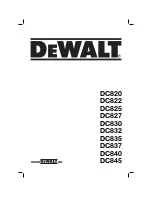
CSPP Capacitor Charging Unit Operation Manual
CSP-CSPP-8000/2
_________________________________________________________________________________________________________
__________________________________________________________________________________________________________
Page
14
of
59
4. Operation
Operation of the CSP-P is similar to previous versions of the CSP.
Installation check-list:-
a) The sound source (boomer plate or sparker) has been connected and that it is in the water.
b) A key pulse is connected
– either through the front panel BNC connector or through the
remote input.
c)
A good earth has been connected from the „Safety Earth‟ bolt on the front panel preferably
to both the ship and a sea earth.
d)
AC mains is connected to the „Mains Input‟ connector.
e) A safety check has been carried out to ensure that there is no-one in the water and that
crew members know that the unit is about to be operated.
Once switched on, the „HV OFF / RESET‟ button must be pressed to reset any fault latches and
the light behind the „Manual Key‟ button is flashing in sequence with the key input signal. The
output power can now be selected by using the Power Select rotary switch. The HV / RESET light
will illuminate upon a change in power setting press reset if required. Once the appropriate setting
has been made, the HV can be energised
– press the „HV ON‟ button.
A series of up to 2 clicks will be heard
depending on the energy selected as the
relays switch in circuit. Once these relays have
engaged, the high voltage is enabled. The HV
ON lamp is illuminated followed by the End of
charge lamp. This indicates that the HV is
ready to be discharged into the load upon
reception of a key pulse.
If either of the power level switches is moved
or if the HV off/reset button is pressed, the unit will shut down safely. In an emergency, the red
„STOP‟ button can be pressed.
The maximum repetition rate is governed by the charge rate (1500 Joules per second) and the
amount of capacitance selected. For example, at 300J / shot the CSP-P models will run at 4 PPS ,
allowing for system overhead time.















































